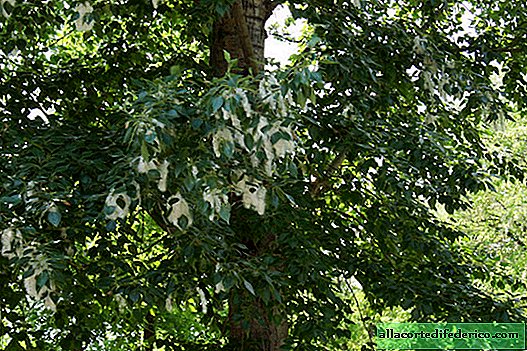Cook pines always look at the equator, wherever they grow
Cook Pines are very unusual trees. Firstly, they also had to travel from their homeland - a group of islands in the southwestern Pacific Ocean called New Caledonia - to various countries of the world. But wherever these beautiful pines appeared, they always grew a little uneven, leaning in one direction. And only recently have scientists discovered that just as a sunflower leans toward the sun, so do the pine trees “bow” to their personal idol - the equator.
60 meter equator pointer
Cook pines are not named after the great navigator, as it might seem at first. Their name was given to them by the famous English botanist Sir William James Hooker. But columnar araucaria, as these trees are also called, is also difficult to characterize as a homebody. Today they grow in tropical, subtropical and temperate regions around the world.

The height of the tree reaches 60 meters, and many have noticed its habit of leaning in one direction. But only the botanist Matt Ritter noticed that in the northern hemisphere the tilt is toward the south. To confirm his guess, he phoned his colleague from Australia and found out that in the southern hemisphere, the Cook pine prefer to lean to the north. Hence the assumption that their goal is the equator.
Genetics or solar hunger
Researchers studied 256 trees in 18 regions on five continents and found that plants almost always lean toward the equator - less than 9% of pines chose other directions. On average, the slope is a little less than 9 degrees, which is more than twice the slope of the Leaning Tower of Pisa. Moreover, the farther away from the equator the tree is, the lower its slope. For example, in South Australia they found Cook pine tilted almost 40 degrees to the ground.
What does this mean?
Scientists cannot say yet. The desire to lean towards the equator may indicate that Cook's pines are looking for more sun. However, most trees do not show such indifference to sunlight, and plants that react to it usually move in the direction of the sun in the sky (like a sunflower). Another version is genetics, which has some significance in New Caledonia and has spread along with the migration of trees.

In the photo: Yucca Short-leaved
By the way, Cook pine is not the only tree with strange behavior. For example, the short-leaved yucca, which naturally inhabits the southwestern deserts of the United States, is always tilted to the south.

















